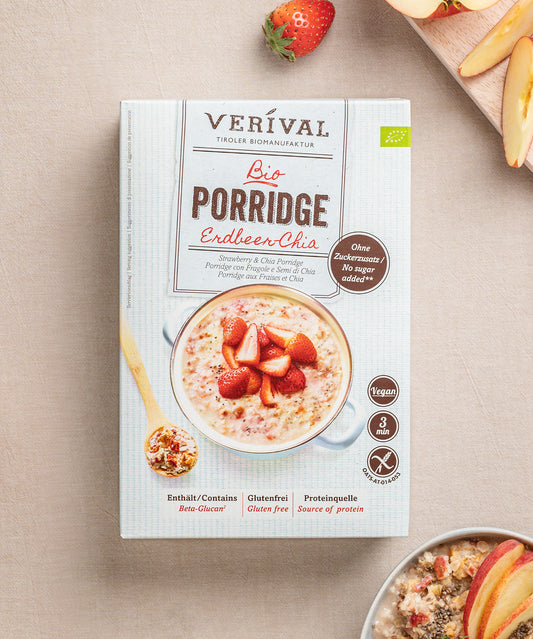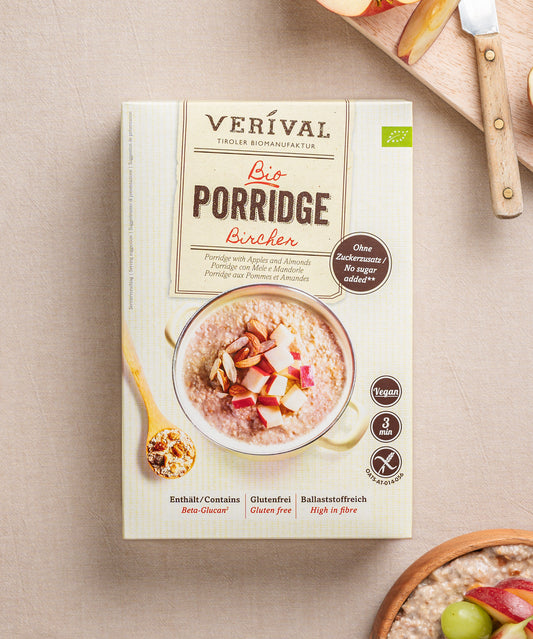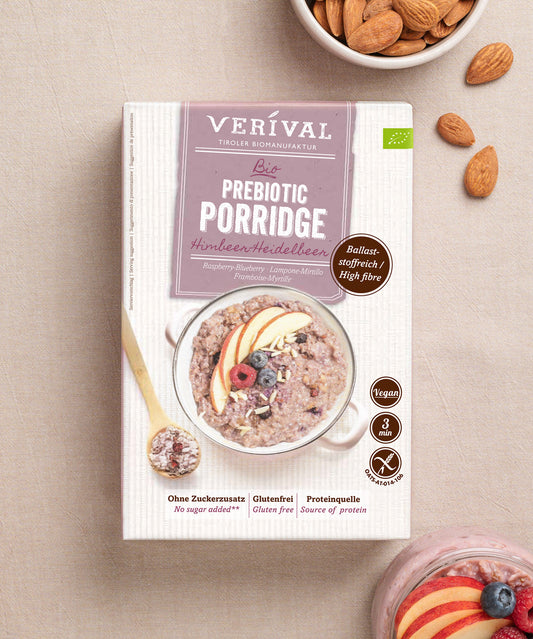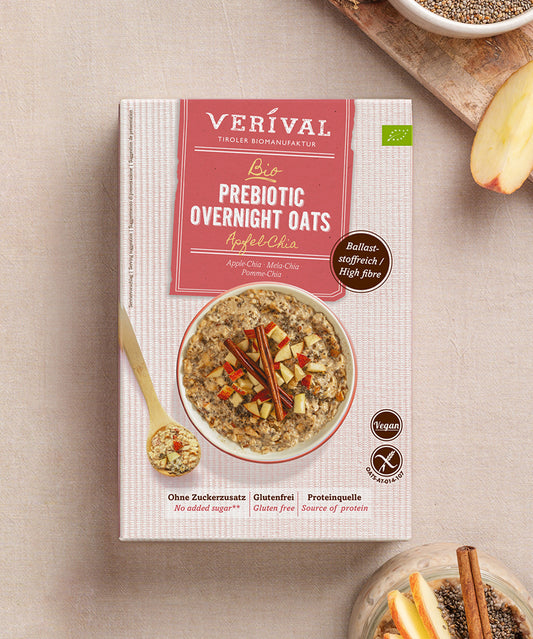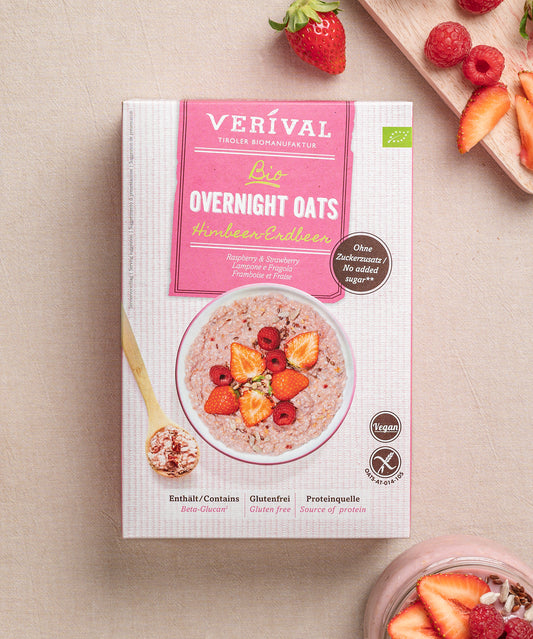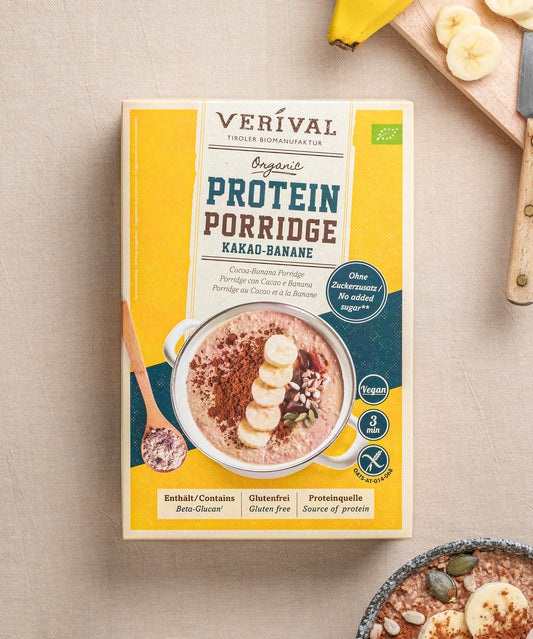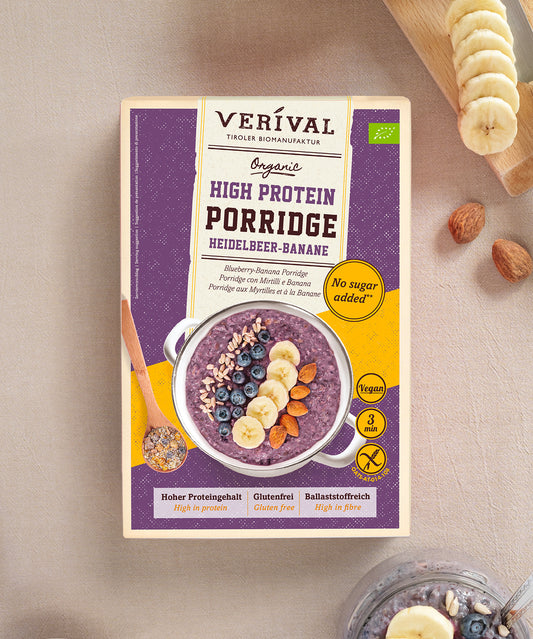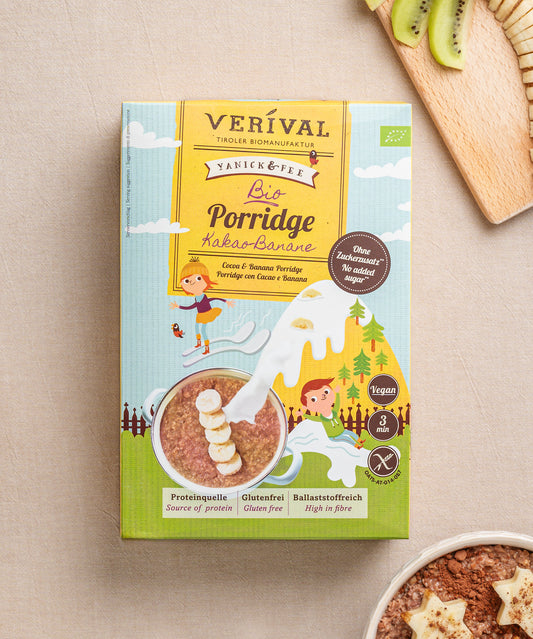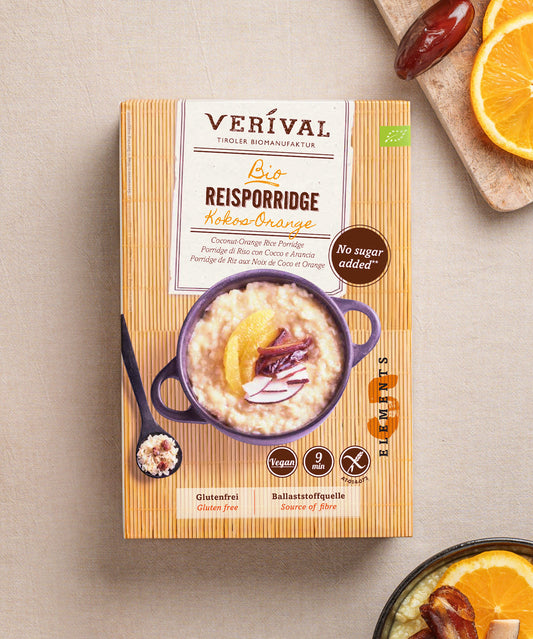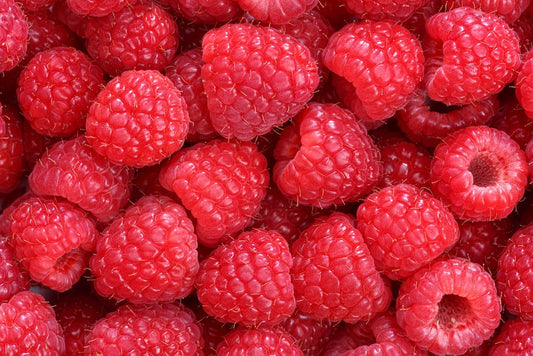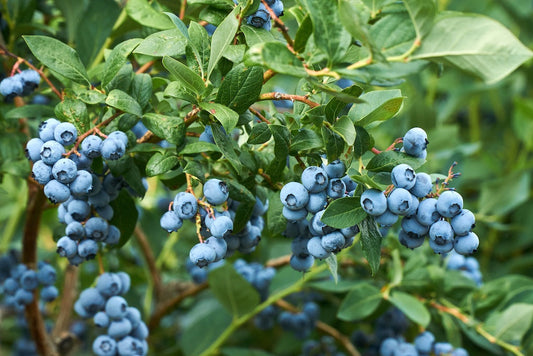The hazelnut (Corylus Avellana), also known as the forest hazel, has been native to Central Europe since the last Ice Age. The common hazel is the oldest fruit variety used in Central Europe. The hazelnuts in our shops come mainly from Turkey (where the tree hazel (Corylus colurna) is found) and Italy. But we get our hazelnuts not only from Europe, but also to a large extent from the USA.
It also thrives in our local gardens – the common hazel. The hazel bush with its fruits, hazelnuts, has been used by humans for thousands of years. But here the harvest is usually not sufficient for larger quantities.
Interesting facts about the hazelnut tree
The hazelnut belongs to the birch family (Betulaceae).
The hazel bush grows up to seven meters high and four to five meters wide. It thrives particularly well on forest edges. Hazelnuts are monoecious, which means that both male and female flowers can be found on the same plant. The hazel blossoms in February and March before the leaves sprout. The typical catkins of the hazel are the male flowers. These male catkins provide the honeybees with an important first source of food. Otherwise, the hazelnuts are pollinated by the wind.
The hazelnut ripens in summer. The ripening nut initially lies in a cup-like fruit casing. This then dries out and releases the nut. During harvesting, remnants of the bracts sometimes still cling to the nut and are removed.
Since the roots of the hazel spread far and also go deep, the wood is well suited for ground stabilization. Hazels are also popular as a privacy screen. Hazelnut trees are winter-hardy and tolerate pruning very well. They should therefore be pruned in the fall, preferably every two years. The young shoots that appear then are relatively thin and tend to grow in a zigzag pattern.
The hazel is quite resistant to diseases and pests. Occasionally, it is affected by mildew, but this does not slow down its vitality. The hazel borer, a beetle, sometimes bores into the nut fruits – probably each of us has seen this on a nut lying on the ground in the forest.
Of course, there are many different hazelnut varieties:
Tip: If you are thinking about planting a hazel bush, the Lambert's nut (Corylus maxima) is one of the best hazelnuts available. The undemanding bush grows bushy and upright with strong shoots.
The corkscrew hazel (Corylus Avellana Contorta) is particularly popular because of its corkscrew-like twisted branches. They are often used for decorative purposes.
Zellernuss: Once established, the Zellernuss is very easy to care for. Young plants should be watered regularly. Well suited for sunny and partially shaded gardens.
Hazelnuts and our health
Hazelnuts are an indispensable part of the kitchen. Whether roasted, blanched, chopped or ground. Cookies, cakes, chocolate, spreads or ice cream – without hazelnuts? We can't imagine it. Can you? You don't have to!
Hazelnuts, or nuts in general, don't have the best reputation due to their high calorie count of 667 calories per 100 grams.
What this figure does not reveal, however, is how many health benefits hazelnuts have. And that is exactly what we want to present to you today. Because of their numerous nutrients and vitamins, the nut should not be missing from any diet. Hazelnuts mainly contain monounsaturated and polyunsaturated fatty acids – i.e. healthy fats, vitamin B1, vitamin B2, vitamin B6 and folic acid (vitamin B9).
You can get a good overview of all types of nuts and what they contain in our blog post: “Nuts and their nutrients”.
Discover nuts and nut mixes from Verival
7 reasons why hazelnuts are so healthy:
1. hazelnuts have a positive effect on memory
Nuts are known to nourish the nerves and are therefore also called “brain food”. And the hazelnut is no exception. If you eat hazelnuts, your memory will improve. Healthy nutrition is important for the whole body, especially for the brain, of course. But how do hazelnuts support the brain's ability to think?
This has to do with the lecithin content of the nut. This has a positive effect on memory and concentration. The magnesium, vitamin E and niacin contained in hazelnuts are also good for the nerves and brain.
2. Hazelnuts lower cholesterol
The body produces cholesterol itself, because it is important for the structure of cells and hormones. Since cholesterol is already present in the body, an infinite amount cannot be absorbed.
If the metabolism is disturbed, cholesterol can accumulate on the arterial walls. This can be further promoted by an unhealthy diet. These include too much meat, milk or eggs, because they contain a lot of saturated fatty acids.
But not all fatty acids are bad. Unsaturated fatty acids can even lower cholesterol levels. These good fatty acids are found, for example, in apples, oats, legumes and especially in nuts. A handful of nuts, such as our beloved hazelnuts, can already lower blood lipid levels. It should be noted that the hazelnut must not be salted or covered with chocolate.
A great way to use the nut is to use hazelnut oil.
The aim should be to replace saturated fatty acids with unsaturated fatty acids as much as possible.
3. The hazelnut is rich in B vitamins and vitamin E
Hazelnuts are an excellent source of vitamins. They contain the following B vitamins: B1, B2, B3, B6, B7 and B9. Vitamin B7, for example, is important for hair growth, numerous metabolic processes and the nervous system. The daily requirement is already covered with 73 grams of hazelnuts.
Vitamin E has an antioxidant effect, is anti-inflammatory and supports the immune system. A deficiency can lead to visual or coordination disorders as well as diseases of the nervous system. The optimal daily intake of vitamin E is already achieved with about 50 grams of nuts.
The hazelnut – an ideal source of vitamins
4. The vegetable source of protein – hazelnuts
Proteins are essential for the body, because they are necessary for many functions. These include, among other things, the cell structure of hair, skin and nails, the immune system, the formation of enzymes and hormones, the transport of oxygen and fat, and the formation of antibodies. So, as you can see, the body needs proteins.
Proteins are found in plant-based foods, but also in animal-based foods. Plant-based proteins, such as legumes, grains, fruits, vegetables and, of course, nuts, have the added benefit of containing micronutrients such as vitamins and trace elements.
Hazelnuts have a protein content of 12 g per 100 g. The bioavailability indicates how well the protein is absorbed or utilized. The higher the value, the better. The hazelnut has a value of 50, while oat flakes have a value of 64.
Discover our Verival Hazelnuts
5. Hazelnuts provide many important minerals
In addition to the important protein and the many vitamins, hazelnuts also contain minerals such as calcium and phosphorus, which strengthen our bones, as well as iron.
6. Hazelnuts as a source of fiber
Dietary fiber is essential for a balanced and healthy diet. It is a fiber-rich ingredient found in mostly plant-based foods. It is a linked sugar molecule that cannot be broken down in the intestines, or at least not sufficiently. Most dietary fiber is found in the carbohydrates in grains, fruits, vegetables or legumes.
Hazelnuts have a relatively high fiber content of 8.6 g per 100 g. But what are the advantages of this? The fiber in hazelnuts helps you feel full and satisfied, so you don't get hungry again straight away. For this reason, people who eat nuts regularly are less likely to gain weight. In addition, fiber protects digestion and helps prevent constipation.
7. Hazelnuts strengthen the heart and blood vessels
Last but not least, hazelnuts strengthen the heart and blood vessels. The nuts have a relatively high fat content of 63%, but as already mentioned, these are unsaturated fatty acids, among other things. Hazelnuts contain 4.5 g of unsaturated fatty acids per 100 g.
And these not only have a positive effect on cholesterol levels, but also on the heart, blood vessels and circulation. The risk of suffering from cardiovascular diseases is reduced.
Health benefits and nutritional value of hazelnuts
These seven advantages of hazelnuts are the reason why we highly recommend them. It is true that they have a lot of calories, so it is better to eat only a handful of them a day.
Have you got the nut? Hazelnuts are included, for example, in our Nut Frucht Urkorn muesli and in our Bircher muesli. Because hazelnuts are also an important ingredient in the original recipe for Bircher muesli, the very first muesli ever:
Our Grain Free Sport Muesli Almond Fig, a grain-free and vegan muesli made from seeds, nuts and fruits, also contains hazelnuts.
Of course, you will also find plenty of hazelnuts in our nut mixes. They can be found, for example, in Energy Kick, Early Bird, Smart Start and Brain Kick.
Frequently asked questions
How healthy are hazelnuts?
Due to their numerous nutrients and vitamins, hazelnuts should not be missing from any diet. They mainly contain monounsaturated and polyunsaturated fatty acids – i.e. healthy fats, vitamin B1, vitamin B2, vitamin B6 and folic acid (vitamin B9) and vitamin E. Nuts are well known to nourish the nerves and are therefore also called “brain food”. And the hazelnut is no exception. This is due to the lecithin content of the nut. This has a positive effect on memory and concentration. The magnesium, vitamin E and niacin contained in hazelnuts are also good for the nerves and brain. A handful of our beloved hazelnuts already lowers blood lipid levels. Important when eaten pure - so not salted or covered with chocolate. In addition to the important protein and the many vitamins, hazelnuts also contain minerals such as calcium and phosphorus, which strengthen our bones, as well as iron. The fiber in hazelnuts helps you feel full and satisfied, so you don't get hungry again right away.
How many hazelnuts can you eat in a day?
The German Nutrition Society recommends eating a handful of nuts a day – about 30 grams. However, hazelnut kernels are only healthy if they are unsalted and unsweetened. Too much salt is bad for the body as it can lead to high blood pressure. Heating these little energy bombs destroys many vitamins and healthy fatty acids. So it's best to enjoy them completely natural!
Are hazelnuts good for the gut?
Some of the phytochemicals have an extremely positive effect on human health. Hazelnut kernels contain several of these valuable substances: phenolic acids have an antioxidant effect, but also an anticarcinogenic and antimicrobial effect, in that they inactivate harmful substances and germs in the intestines. Regular consumption improves the intestinal flora in general and is healthy and balanced.
Why are hazelnuts healthy?
Due to their numerous nutrients and vitamins, hazelnuts should not be missing from any diet. They mainly contain monounsaturated and polyunsaturated fatty acids - i.e. healthy fats, vitamin B1, vitamin B2, vitamin B6 and folic acid (vitamin B9) and vitamin E. Nuts are well known to nourish the nerves and are therefore also called “brain food”. And the hazelnut is no exception. This is due to the lecithin content of the nut. This has a positive effect on memory and concentration. The magnesium, vitamin E and niacin contained in hazelnuts are also good for the nerves and brain. A handful of our beloved hazelnuts already lowers blood lipid levels. Important when eaten pure - so not salted or covered with chocolate. In addition to the important protein and the many vitamins, hazelnuts also contain minerals such as calcium and phosphorus, which strengthen our bones, as well as iron. The fiber in hazelnuts helps you feel full and satisfied, so you don't get hungry again right away.
Are too many hazelnuts unhealthy?
Hazelnuts contain a lot of vitamin E, which protects the cells from premature aging. The lecithin contained in the nuts also improves nerve and brain performance. The German Nutrition Society recommends eating a handful of nuts a day - about 30 grams (unsalted, etc.). Since hazelnuts are high in fat - albeit healthy fats - they should not be consumed in excess. But definitely in the recommended amount and on a regular basis.
Which is healthier, walnuts or hazelnuts?
Hazelnuts contain a lot of vitamin E, which protects the cells from premature aging. The lecithin contained in the nuts also improves nerve and brain performance. Walnuts, on the other hand, are packed with B vitamins and unsaturated fatty acids, which promote concentration. Walnuts contain up to 75% unsaturated fatty acids, which are particularly effective in preventing cardiovascular diseases. Both types of nut are real energy bombs. Among experts, the walnut is still slightly ahead.


